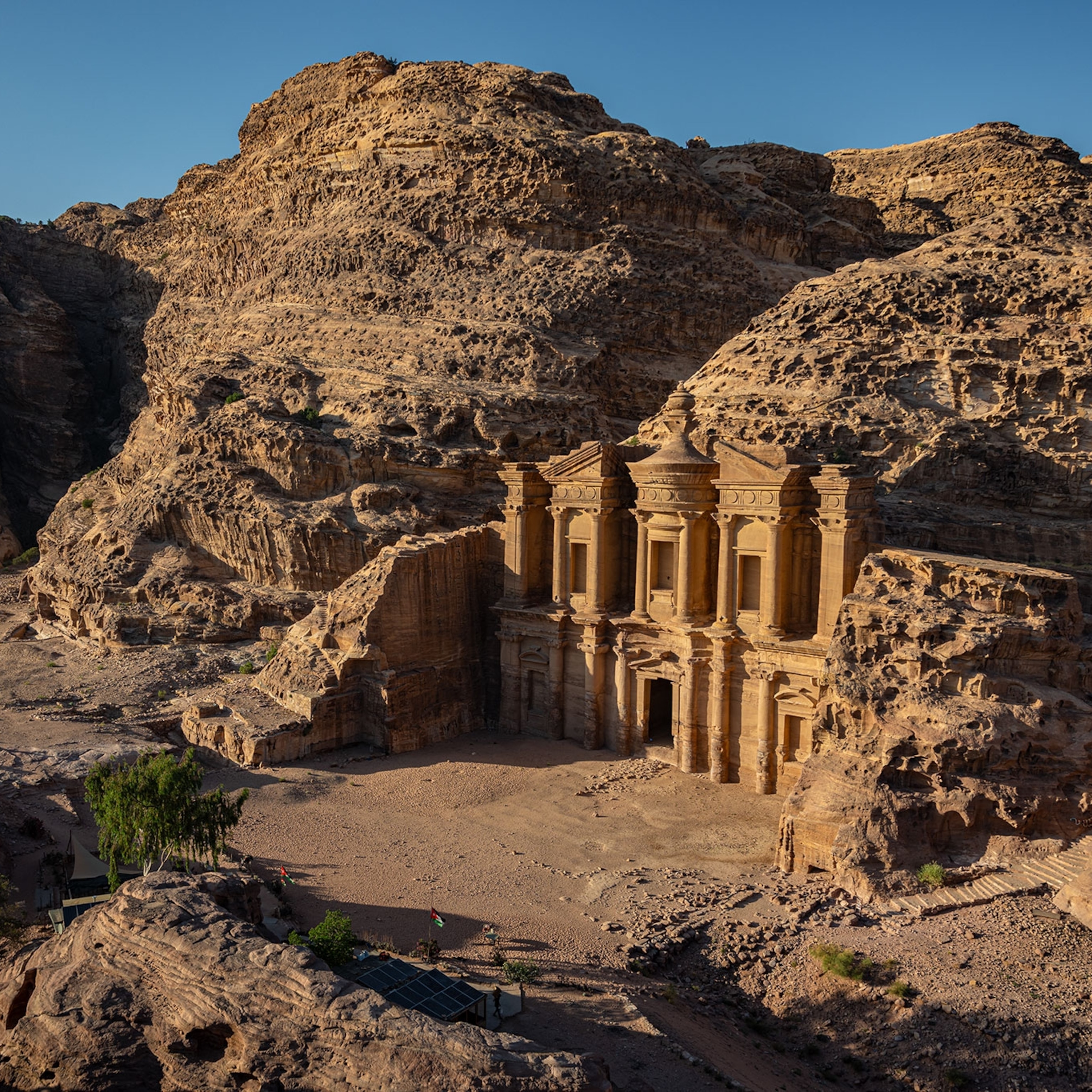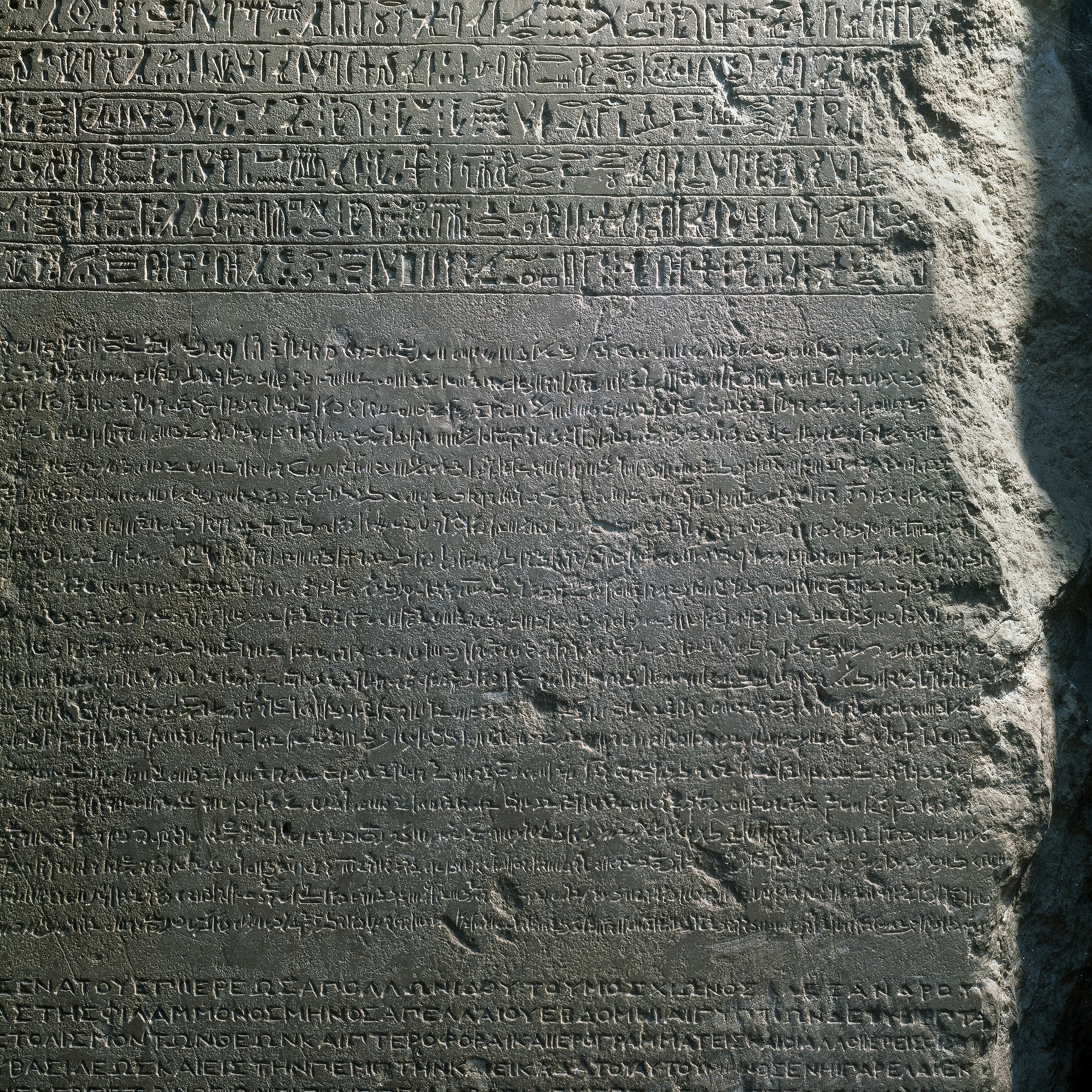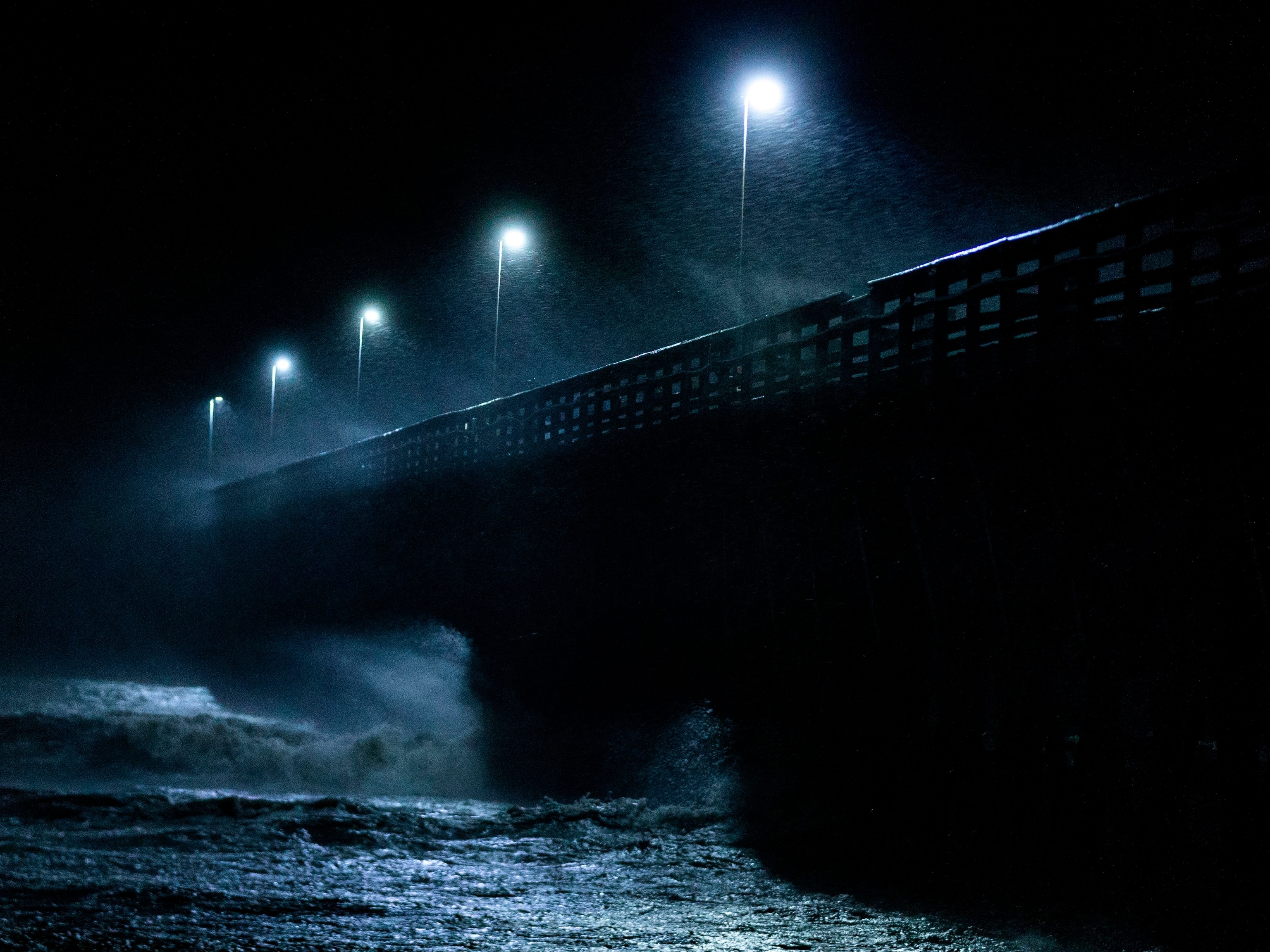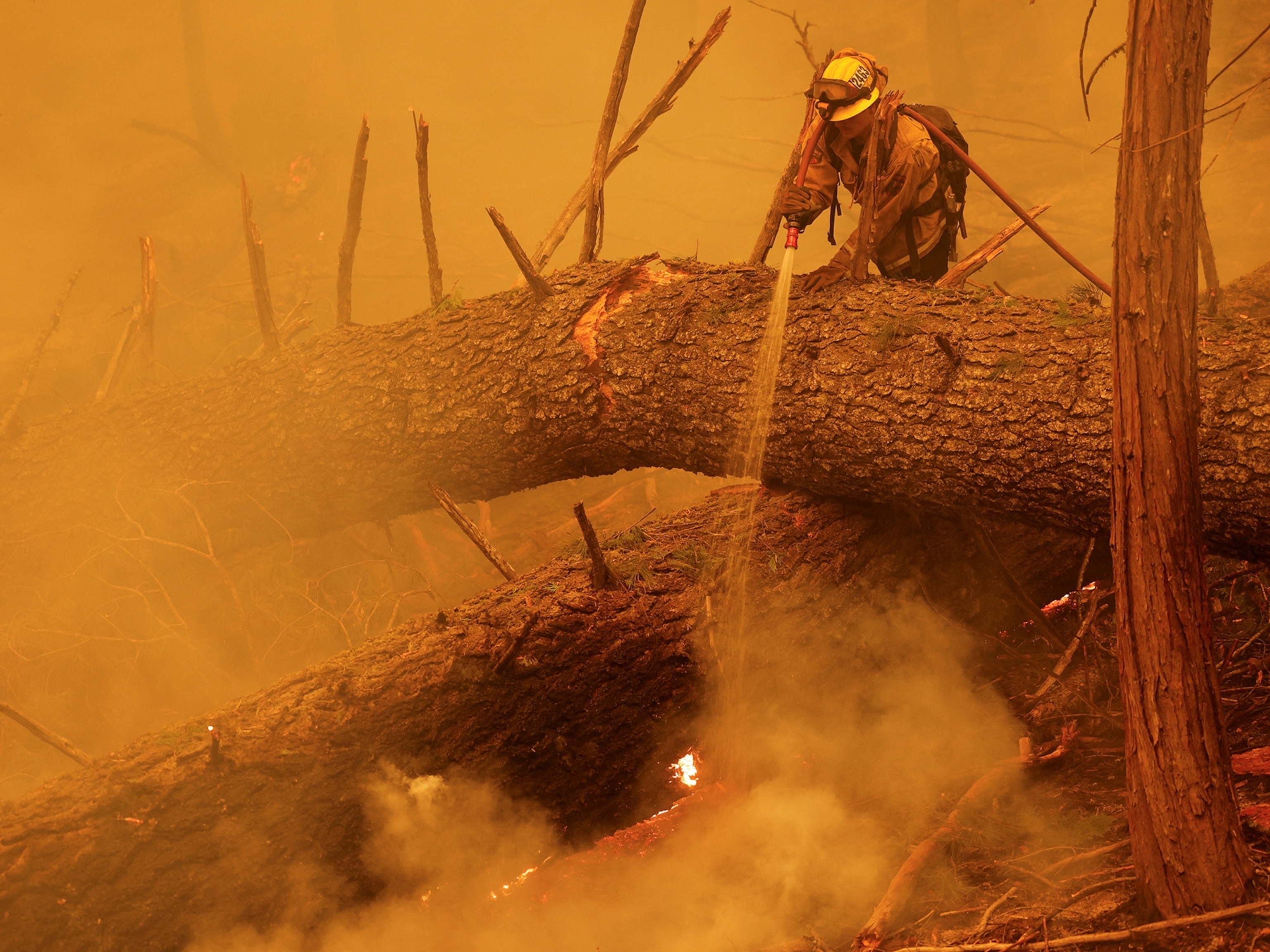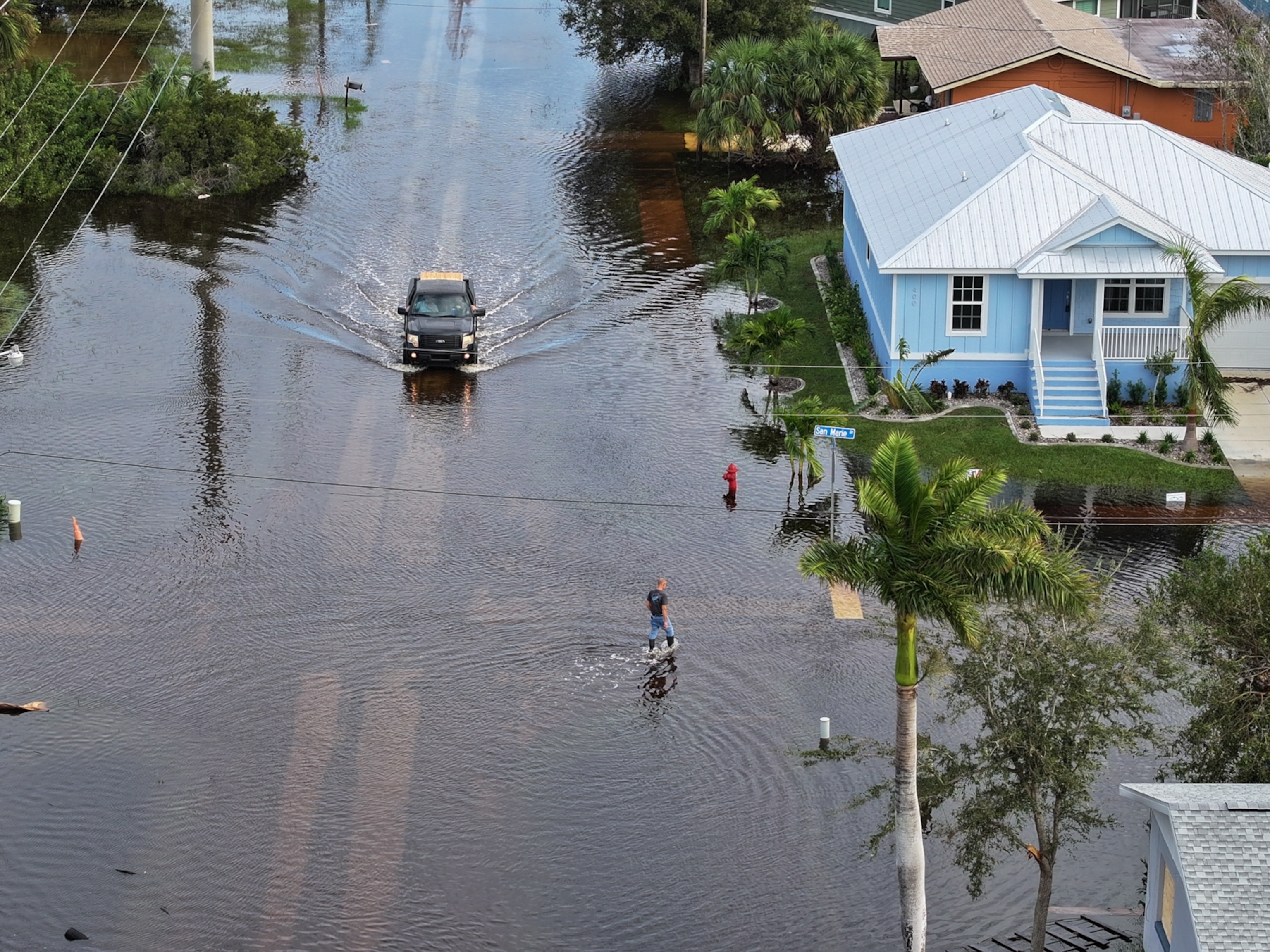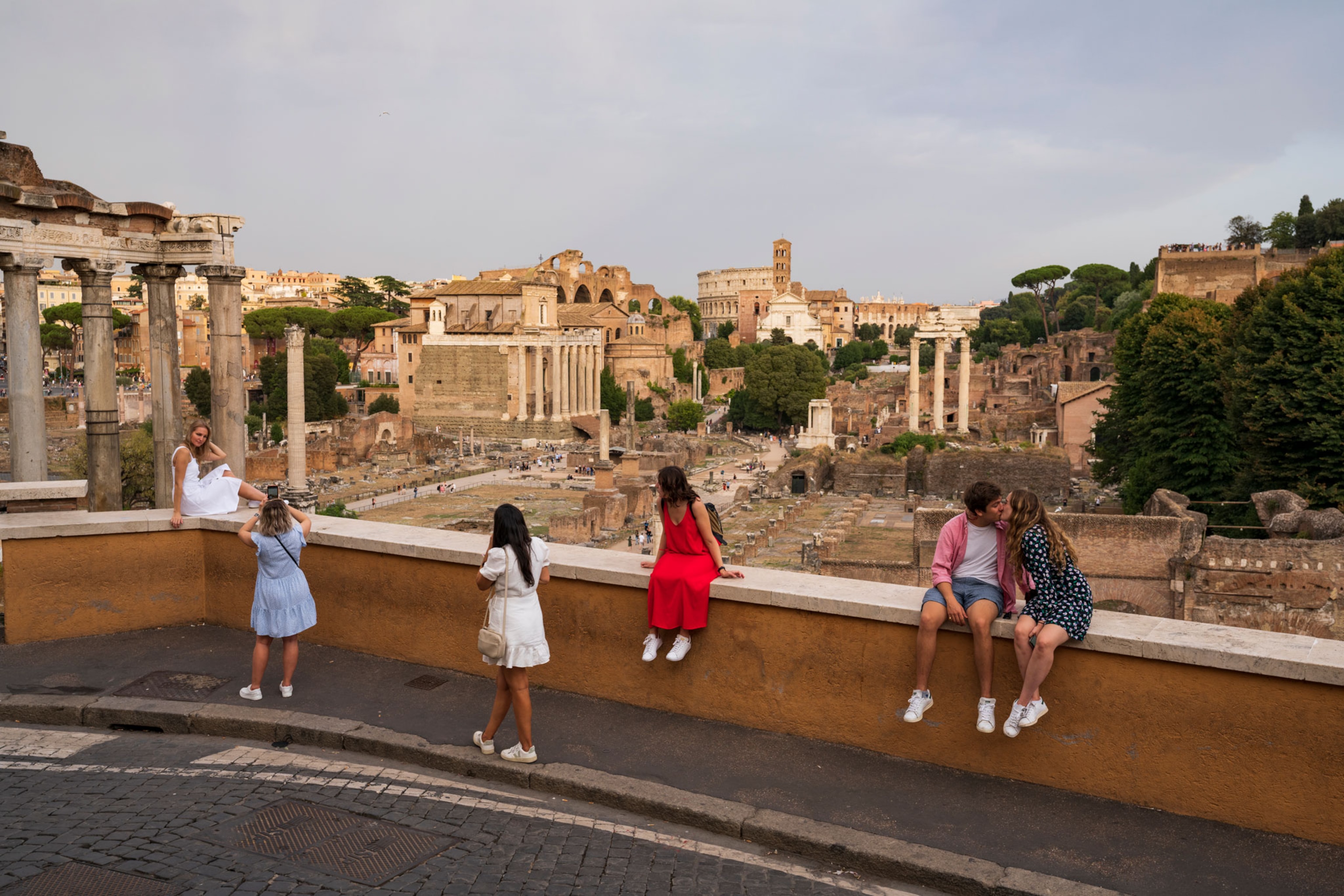
Rome wasn’t built for today’s climate. Is there time to save it?
The question isn’t if a devastating flood will happen—but when. A newly created Office for the Climate is scrambling for a solution.
Rome wasn’t built in a day, but a large portion of it can be devastated in a few hours when an extreme weather event hits, according to experts studying the city’s vulnerability. Rising temperatures are making severe storms more frequent globally, but what makes Rome a ticking climate time bomb is a combination of outdated infrastructures and decades of planning policy decisions that largely ignored the unfolding crisis.
While the climate is changing, the Eternal City is not.
Since 2008, extreme rainfalls have increased in frequency and intensity, and roughly 20 of the most extreme events recorded between 2010 and 2020 caused significant floods in the urban area, according to the Euro-Mediterranean Center on Climate Change. Even moderate rainfall regularly turns some streets of the city, which is spread out on the hills, into paved rivers flowing toward the low areas, inundating subway stops and underpasses.
Severe heat waves are the flip side of the climate coin. In the last two decades, average temperatures in Rome have risen by 3.6 degrees Celsius compared to the period between 1971 and 2000, and the number of heat-related deaths among adults aged 50 and over has increased by 22 percent. Mortality rates among the elderly spike dramatically during the summer near the ever-expanding urban heat islands. Rome’s climate is an all-too-common pendulum swinging between drought and flood, but the city doesn’t have an adaptation plan yet and its complex, centuries-old structure is particularly exposed to climatic variations.
“Climate change is exacerbating pre-existing problems,” says Andrea Filpa, an architect and urban planner at the University Roma Tre who co-authored the first vulnerability map of Rome.
His research highlighted some of the city’s main obstacles to adapting to climate change. For instance, more than 90 percent of the urban area is covered in impermeable soil, which prevents water from draining. Several neighborhoods don’t have effective sewage systems, making those areas prone to flooding. Some districts near the coast were reclaimed in the 19th century and are now below sea level, requiring constant water pumping to keep them dry. The city also has one of the highest concentrations of illegal buildings among European capitals, and it is an administrative behemoth covering an area two-thirds larger than New York City.
“The old approach would be considering what infrastructures we can build to contain the new challenges, but that just doesn’t work in a city like Rome,” says Filpa. “The more sensible approach involves looking at everything we do, from road repairs to new constructions, through a climate lens, carefully testing their impact. That is the hardest conceptual step to make for a city like this one, which is exposed to a composite combination of challenges.”
Primary threat
The main threat comes from water. The city is built on a hydraulic balance that is designed for a pre-industrial climate. A massive flood of the Tiber River would be devastating, and it is not a question of if it will happen, but when. Experts agree that the breaking point of the riverbanks is located in the northern area of the city, around the Milvian Bridge, where the troops of Constantine I defeated Maxentius in 312 AD, crowning him as the sole ruler of the Roman Empire. If the river were to break its banks in this area, the water would flow down undisturbed toward the historic city center.

Aldo Fiori, an hydraulic engineer at the University Roma Tre and a leading expert on Rome water system, modeled the next floods of the Tiber on the basis of information on the most recent ones, simulating their extension and depth assuming events with different return periods. In every scenario, the Pantheon ends up filled with at least eight feet of water and the whole historic center is severely damaged.
“The Tiber has always flowed over the millennia, the first recorded flood dates back to the fifth century BC, but what really boosts the lasting impact of these events is the amount of impermeable soil that the water encounters,” Fiori says, while showing 3D apocalyptic simulations of floods that actually reproduce likely scenarios. The flood of 1598, the most damaging ever recorded in Rome, killed an estimated 3,000 people, which was around 3 percent of the city’s population at the time.
Radical solutions have been considered in the past. The great flood of December 1870, just a few months after the Italian Army captured Rome and dissolved the Papal States, prompted Giuseppe Garibaldi, the hero of Italy’s unification, to submit an incredibly ambitious project to divert the Tiber and forever spare Rome from floods and malaria.
“In retrospect, the plan was quite smart,” says Fiori, noting that the city of Valencia, in Spain, rerouted the river Turia in the 1960s after a ruinous flood. “But a cost-benefit analysis made decision-makers at the time opt for raising embankments walls, which was only a partial solution to containing the river.”
Today, acting on the permeability of the ground is almost the only way to reduce risks and limit damages. “Rules on soil consumption impose the principle of so-called ‘hydraulic invariance,’ which means that for every square inch of soil that is sealed, an equal amount of permeable soil must be created. However, the concept may be tricky, because it does not solve the hydrological problem, that is to say what happens underground in terms of water distribution,” Fiori said.
Infiltration basins, rain gardens, and other nature-based solutions that collect huge amounts of water and let it percolate slowly into the ground are innovative solutions to mitigate risks in flood-prone urban areas like Rome. However, Fiori warns, “if they are built without an overall vision, they may not be beneficial, and in some cases can be even counterproductive. You need a carefully coordinated, comprehensive plan to make the infiltration mechanisms work the right way. You can’t just go batch by batch. In this case, the idea of an all-encompassing vision for the city is not just an inspiring and empty slogan, but a very practical matter to make things work.”
Vision for Rome
The person in charge of drawing the overall vision for Rome is Edoardo Zanchini. An architect and a long-time environmentalist, he was named director of the city’s newly-created Office for the Climate in 2022. In 2021, Rome’s city council voted on a plan to achieve a 51 percent reduction of greenhouse gas emissions by 2030.The Office for the Climate is working to present an adaptation strategy by next fall.
What will the new plan look like? “It will be anything but what has been done at the national level,” Zanchini says. “In the recent past, the Ministry of Environment and other departments produced many interesting, and very long books and research papers, but no solutions to actual problems. My approach is the opposite. My office is focusing on identifying priorities and devising effective measures for local problems, which in each district of the city can also be radically different.”
The three priorities set by Zanchini are: Prevent Rome from running out of water, mitigate the risks of disastrous flooding, and set emergency measures to counter the effect of deadly heat waves during the summer, which disproportionately affect older and economically fragile people.
Rome is increasingly dotted with urban heat islands, where mortality among people over 65 is twice as much compared with green areas. Researchers estimate that increasing tree coverage and investing in green urban infrastructures could reduce mortality by 200 units per year.
For Zanchini, the task to forge a plan to preserve Rome and its over 2,800 years of history, should be daunting. But he remains optimistic.
“With a pragmatic approach, a lot can be done,” he says, “from fixing our leaky aqueduct system to investing in planting trees already grown in the most cemented areas to give immediate relief to the people living there.”

